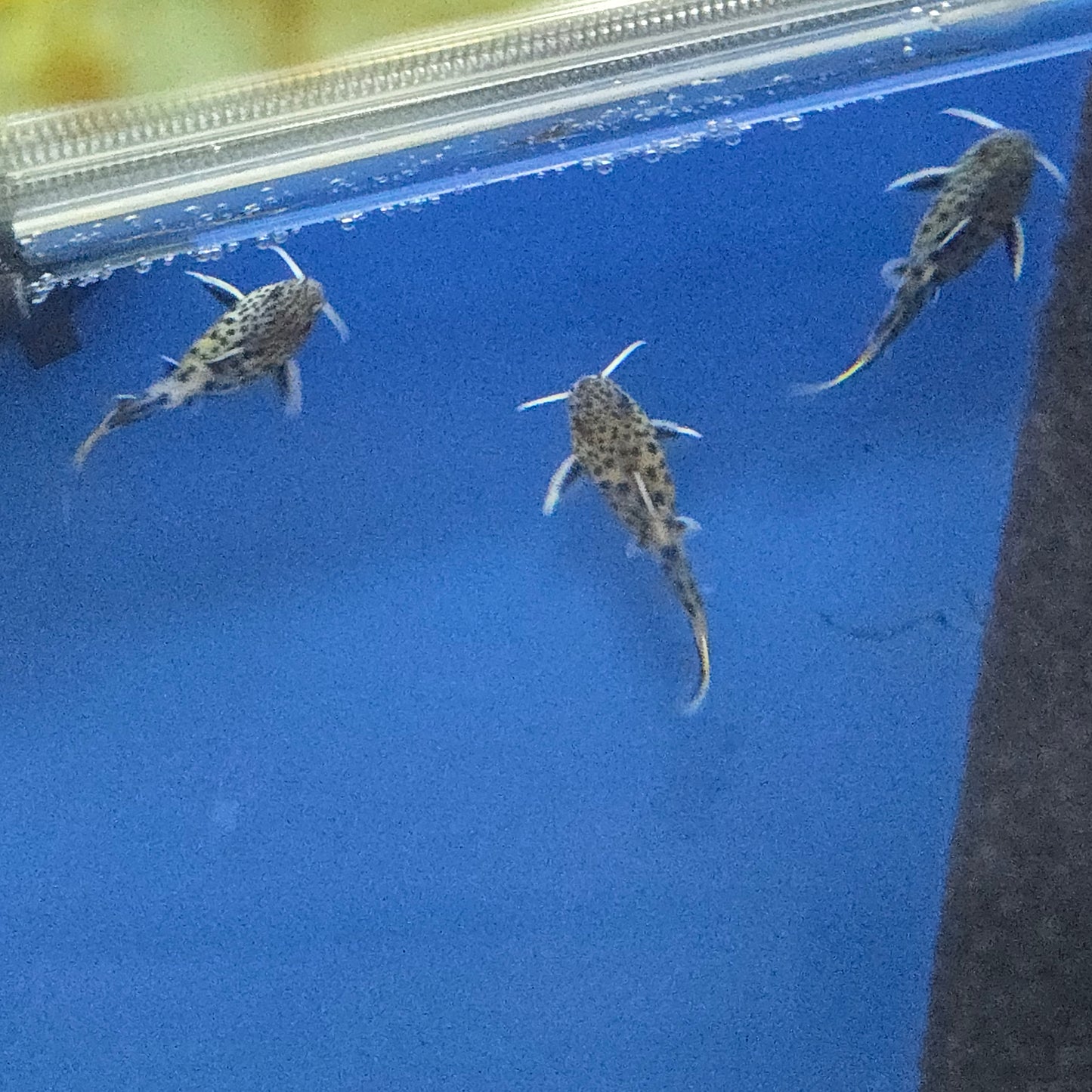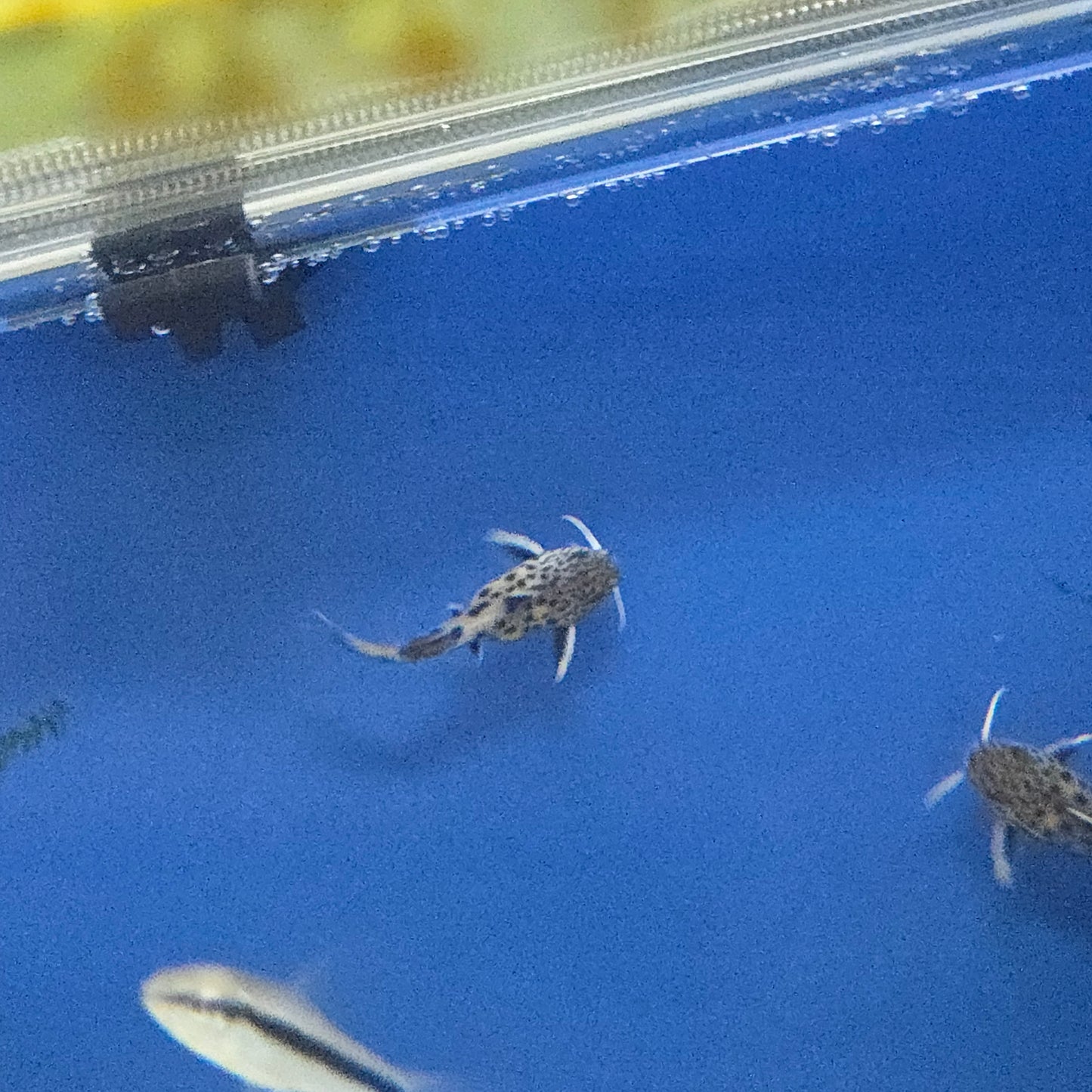Fancy Fish and Aquascapes
Dwarf Petricola Catfish ~ Synodontis lucipinnis
Dwarf Petricola Catfish ~ Synodontis lucipinnis
Couldn't load pickup availability
The Dwarf Petricola, often confused with its close relative, the Synodontis petricola, is a peaceful and hardy freshwater catfish known for its compact size and attractive spotted pattern. Native to the rocky shorelines of Lake Tanganyika in East Africa, this species is prized for its active nature, peaceful demeanor, and compatibility with many cichlid setups.
- Size: 3-4 inches
- Lifespan: 8-10 years
- Temperament: Peaceful, active
- Group/Solitary: Best kept in groups of 3+
- Food: Omnivorous; sinking pellets, algae wafers, live/frozen foods (bloodworms, brine shrimp, daphnia)
- Water Requirements: 75-82°F, pH 7.8-9.0, hard water
Care Instructions
The Dwarf Petricola inhabits rocky environments in Lake Tanganyika, where it thrives in alkaline, hard water conditions. In aquariums, these fish do well in setups that mimic their natural habitat, with rocky caves and crevices for hiding and exploring. A sandy substrate is recommended to protect their sensitive barbels. A tank size of at least 30 gallons is suitable for a small group, as they are highly social and display fascinating behaviors when kept in groups.
Their diet should include high-quality sinking pellets and wafers, along with live or frozen foods like bloodworms and brine shrimp. While they may graze on algae, they are not primary algae eaters and require a balanced omnivorous diet for optimal health.
Dwarf Petricola Catfish are peaceful and can coexist with other similarly sized, non-aggressive fish. They are particularly well-suited to cichlid tanks, as they can tolerate the higher pH and harder water associated with cichlid setups. Their active, nocturnal habits make them excellent bottom-dwellers that bring life to the lower levels of the aquarium.
Fun Fact: The Dwarf Petricola is often referred to as the "cuckoo catfish" due to its occasional spawning behavior of depositing eggs in the nests of mouthbrooding cichlids. This fascinating strategy allows their fry to hatch and grow under the protection of the unsuspecting host!
Share




